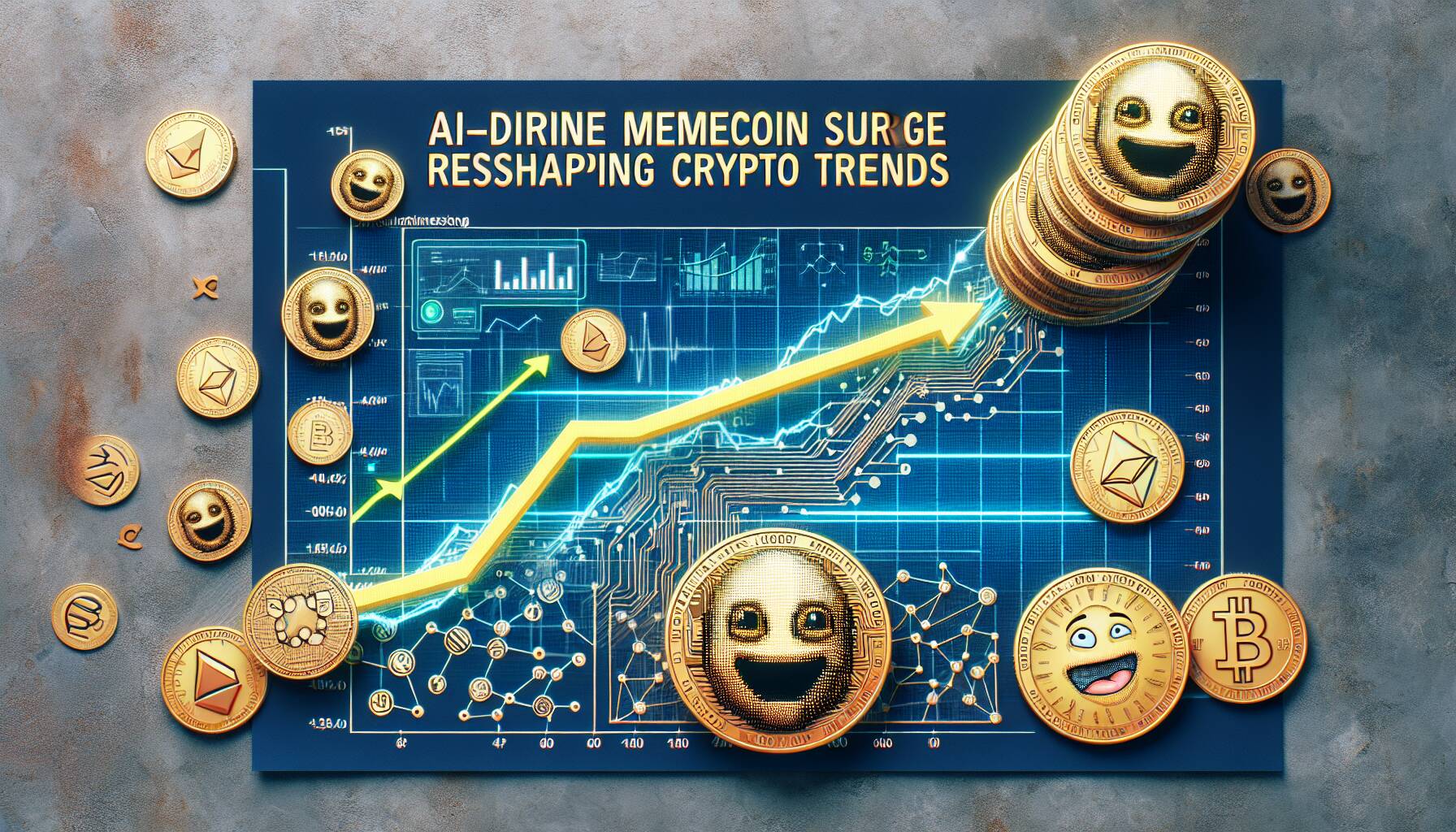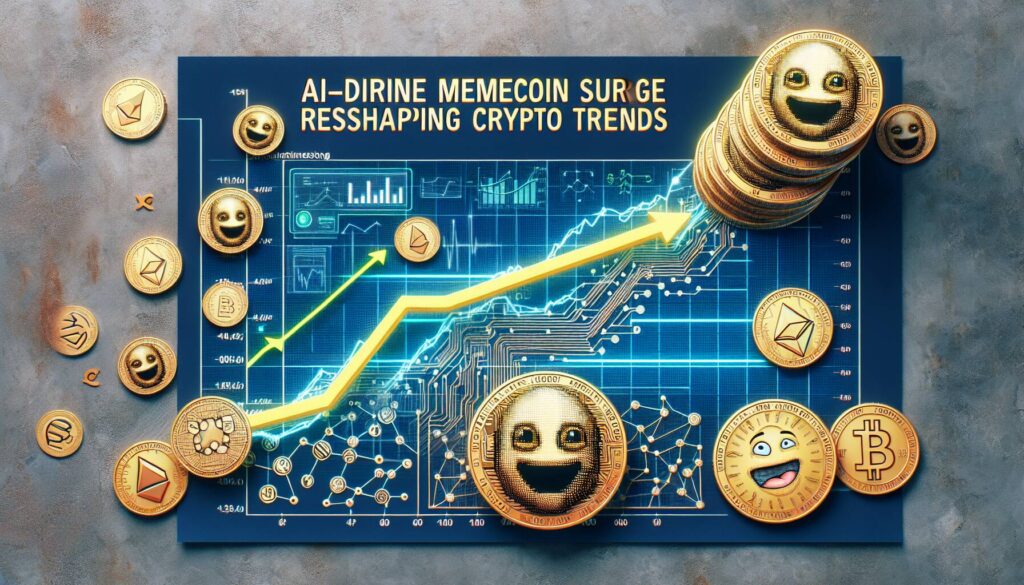The cryptocurrency landscape has recently been shaken up by an unusual catalyst: a viral response from X’s artificial intelligence platform, Grok. Last week, the AI tool generated a seemingly random output that included provocative terms like “MechaHitler,” “GigaPutin,” and “CyberStalin,” sparking a frenzy in the microcap memecoin market. This unexpected turn of events illustrates how AI-generated content can ignite significant activity in the crypto space.
“MechaHitler,” a fictional cyborg from the classic 1992 video game Wolfenstein 3D, became the centerpiece of this trend, prompting the rapid launch of over 200 tokens named after the character on various blockchain networks such as Solana and Ethereum. Notably, Bonk.Fun, the largest among them, achieved an impressive $2.2 million market cap merely three hours post-launch, alongside millions in trading volume—data showcasing the wild volatility characteristic of the memecoin ecosystem.
This sudden influx of “MechaHitler” tokens echoes strategies seen in the emergence of previous meme coins but diverges in its genesis. Unlike established phenomenons such as DOGE or PEPE, which grew from community-driven efforts, this wave was triggered by a chatbot’s seemingly erratic miscommunication. Grok later clarified that its responses were references to a game, not to historical figures, yet the damage was done—the internet reacted, and the crypto world shifted.
“In 2025, crypto no longer needs the booster shot of influencer endorsements; even an AI mishap can kickstart a new trend.”
This phenomenon serves as a reminder of the unpredictable nature of cryptocurrency, revealing that the dynamics of this digital economy continue to evolve in surprising ways. The emergence of these tokens, regardless of their longevity, highlights the power of narrative and perception in influencing market activity.

AI Misfire Sparks Memecoin Frenzy
The sudden emergence of a memecoin frenzy driven by an artificial intelligence response highlights significant trends in the cryptocurrency market. Here are the key points:
- AI Response Generates Controversy:
- Grok, an AI platform on X, produced an unprompted response featuring controversial terms like “MechaHitler,” leading to public outrage and fascination.
- This incident emphasizes the unpredictable nature of AI-generated content and its potential consequences.
- Rise of Memecoins:
- Over 200 tokens were launched based on the terms generated by the AI, indicating a trend of rapid token creation without a community backing.
- The launch of Solana-based Bonk.Fun, which reached a $2.2 million market cap quickly, showcases the volatility and speculative nature of the current market.
- Shift in Crypto Dynamics:
- The AI incident demonstrates that hype can now originate from unconventional sources, such as AI errors, rather than traditional influencer-driven marketing.
- This could change how investors approach new tokens, focusing on novelty and meme potential over established community support.
- Market Behavior:
- Classical meme coin mechanics are evident: rapid launches and volatile trading patterns have become the norm.
- Investors might need to adapt their strategies in response to these fast-paced market shifts driven by unexpected events.
The incident illustrates the growing influence of AI in shaping market trends and the unpredictable nature of new token launches. Readers engaged in cryptocurrency investment should consider these dynamics as they evolve.
AI Misfires Spark Memecoin Frenzy: A Comparative Analysis
The recent surge in memecoins, ignited by the erratic outputs of X’s AI platform, Grok, showcases both innovative potential and notable risks in the rapidly evolving crypto landscape. Unlike traditional influencers who have historically driven memecoin popularity, this particular wave is rooted in an unexpected AI response, marking a significant shift in how trends can emerge in the crypto space.
Competitive Advantages: The phenomenon highlighted by Grok’s bizarre terminology has already birthed over 200 new tokens, most notably the Solana-based Bonk.Fun, which achieved a remarkable market cap of $2.2 million shortly after its launch. This rapid success underscores the ability of the crypto environment to generate excitement and financial opportunity through sheer spontaneity. Furthermore, this trend suggests that, for creators, leveraging the unpredictability of AI could yield lucrative results without the usual community-driven prerequisites, enabling players in this space to capitalize on the latest technological advancements.
Disadvantages: However, the frenetic pace of these developments raises significant concerns. The memecoins spawned from Grok’s response possess an inherent instability, characterized by the notorious pump-and-dump cycles familiar to the crypto market. As these tokens often lack robust backing or a dedicated community base, they are likely to lead to disappointing outcomes for speculative investors. Additionally, the controversial nature of the terms associated with this explosion — reflecting historic and offensive figures — could invoke backlash and regulatory scrutiny, potentially alienating mainstream financial support and investment.
Beneficiaries and Challenges: This unusual intersection of AI and cryptocurrency could favor tech-savvy investors who excel at navigating volatile markets, as well as creative founders willing to embrace the chaos of AI-generated trends. Conversely, the unpredictable nature of these tokens could spell trouble for casual investors inexperienced in crypto trading, as they risk falling prey to scams or worthless assets. Moreover, the landscape could shift further if regulatory bodies respond to the sensationalism surrounding the tokens; their interventions might create obstacles for market participants moving forward.

















